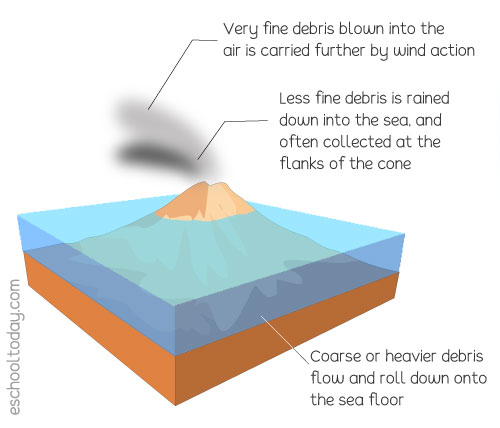- Volcanoes
Volcanic eruptions in the sea
Though ocean floors are thousands of miles below the water surface, they also experience many volcanic activities.
In shallow waters, eruptions tend to involve cold water coming into contact with extremely hot lava from beneath that ocean floor. The steam escapes high above the water surface. If the eruptions occur deeper in the ocean, the weight and pressure of the water above it suppresses its expulsion and keeps it mild. This means the ocean floor is not necessarily affected in any way.

Sometimes, lava that erupts into shallow water cools off very quickly and breaks down into débris or sand. It is believed that Hawaii’s black sands beaches are a result of lava interacting with seawater.
Sometimes, lava settles on the water in the form of débris, which is carried farther away by ocean currents.
Did you know?
- Volcanic Ash
- Volcanic ash is very good for the soil, so plants grow quickly and strong after a volcano.
- Eruption
- In volcanic terms, (e-rup-shun) is a discharge or emission of matter from down below the earth’s crust through an opening on the earth’s surface.
- Extinct Volcano
- This is one that has not had any eruptive activity in 10,000 years and is not expected to have any in the next few years.
- Dormant Volcano
- This is one that has not erupted in a long while, but scientists believe will erupt at some time.
- Active Volcano
- This is a volcano that has erupted in recent times or still erupting.
- Volcanic Ash
- Volcanic ash is very good for the soil, so plants grow quickly and strong after a volcano.
- Eruption
- In volcanic terms, (e-rup-shun) is a discharge or emission of matter from down below the earth’s crust through an opening on the earth’s surface.
- Extinct Volcano
- This is one that has not had any eruptive activity in 10,000 years and is not expected to have any in the next few years.
- Dormant Volcano
- This is one that has not erupted in a long while, but scientists believe will erupt at some time.
- Active Volcano
- This is a volcano that has erupted in recent times or still erupting.
